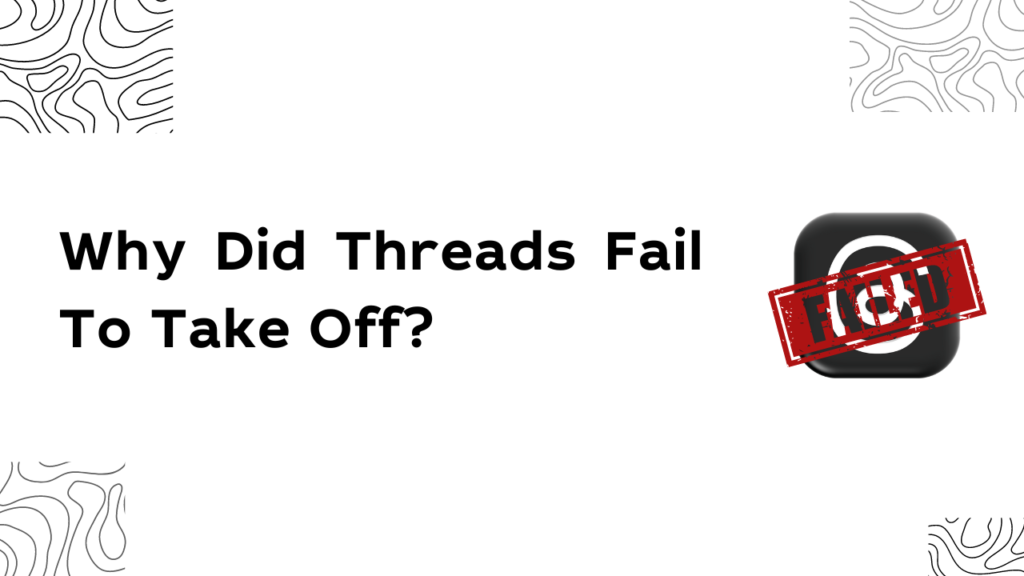In July 2023, Meta launched Threads. This microblogging platform was expected to change the game with much fanfare behind it. With Meta behind it and several million active users, the platform had the best positioning it could take on against Twitter. That never happened. Let’s begin to explore a few of the reasons that, until now, have prohibited Threads from serving as a sought-after and needed competitor against Twitter.
The Launch Hype: Meta’s Strategic Play
Threads had an excellent beginning in product life by using all its relations with Instagram properly and reaping benefits with a huge user base in no time. And, therefore, is no surprise that in just one week, Threads was able to gather 100 million sign-ups-a figure which Twitter has gained in several years. This was the kind of fast-tracked growth that made Threads seem like it was ready to seriously take on the microblogging platform.
That success wasn’t to last, though. Two months in, user engagement in Threads fell by a shade over 50%. Even while the company had managed to get users into its fold, it could not keep them on its latest offering.
User Experience: A Comparison of Two Platforms
Twitter was all about real-time updates, trending topics, and a way to contact public figures directly. Threads don’t have much to differentiate them from Instagram. Without some value proposition, they will still feel more part of Instagram rather than a platform unto themselves.
Threads also received a lot of flak for its super-minimalistic design. It did not have major features like hashtags, trending topics, and personalized feeds that formed the backbone of the Twitter experience for its users. This further made things difficult for Threads to get an edge over the already-established Twitter platform.
Monetization and Advertiser Appeal
Under Elon Musk, Twitter had its refined ad model going into 2023, which was supposed to bring in huge revenue despite challenges. Conversely, Threads had no apparent way to monetize at its beginning. Mark Zuckerberg then suggested that monetization shall not be a target until Threads reached one billion users, a target which began to look increasingly unattainable as users stopped engaging on the site. Finally, not having that revenue strategy carried the consequence that it was very hard to reach a high number of advertisers, further stunting its growth.
Cultural Context: Twitterverse vs. Threadosphere
Twitter has been a cultural nerve centre for real-time news, political conversation, and breaking stories or events. It’s a kind of virtual town square where public figures, journalists, and regular users all meet. In Threads, cultural relevance was nowhere to be found.
But whereas Twitter could be a fast-moving, often argumentative outlet, such a philosophy just didn’t make much sense on Threads. This sheltered focus being nurtured, aimed at positive contact, felt almost removed from the real-world perception of how social media functions.
Key Insights: What Went Wrong for Threads?
1. Lack of Differentiation: One of the reasons people would not quit Twitter was because threads didn’t give users a reason to leave Twitter in the first place, as it lacked those features that make Twitter unique.
2. Problems in User Retention: After a record-breaking start, Threads finally started to falter in retaining its active users. The daily active users began falling as much as a couple of months later.
3. Monetization Difficulties: One problem of monetization is that, in the absence of any clear revenue model, it failed to lure any advertisers, and hence obtained restricted growth.
4. Cultural Disconnect: Threads failed to position itself as a real-time discursive platform, and that is why it couldn’t compete with Twitter.
A Fresh Take: Misaligned Goals in the Threads vs. Twitter Showdown
To understand why the rivalry between Threads and Twitter did not take off, one has to understand the bigger strategy of Meta. It sounded very much like a reactive product launched in response to the perceived weaknesses in Twitter under its new management. This reactive strategy set up misaligned goals.
Well, Twitter had a very clear value proposition: it’s the home of live conversation and information exchange. Meta wanted to make a clone without actually being true to either ideal. Indeed, Threads looked far more like a mashup of Instagram and Twitter than each individually. It copped out, in other words, and never leveraged the best parts of either. It got a product that could never truly compete because of the lack of focus.
While Meta’s Threads was to disrupt the microblogging space, it never did due to a lack of differentiation, bad user retention, and misaligned goals. For Twitter, maintaining its dominance is an ongoing challenge, however, the failed competition with Threads has been a good omen that long-term success will require a well-defined value proposition combined with a user-centric approach.

